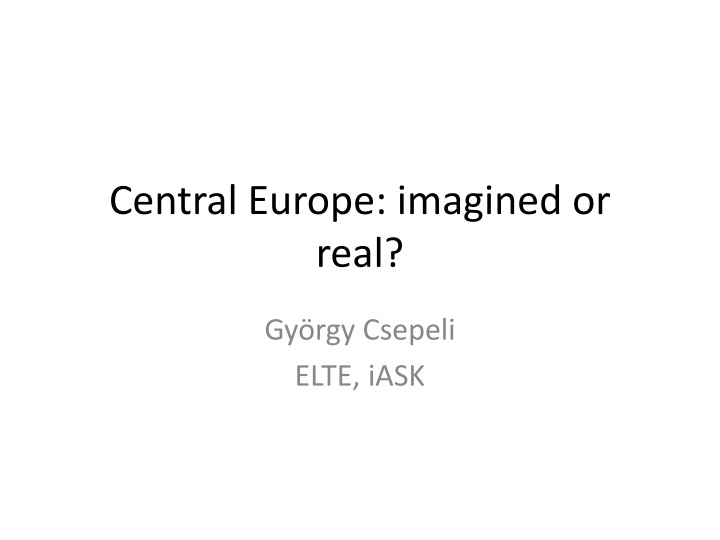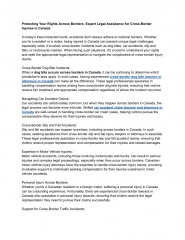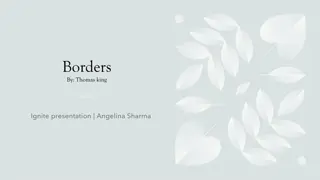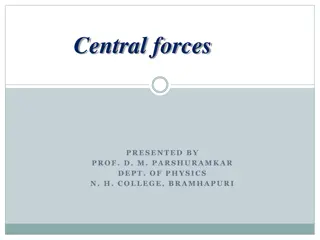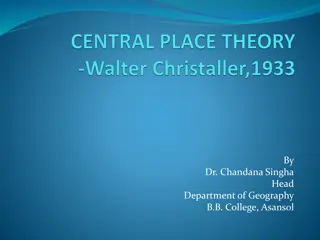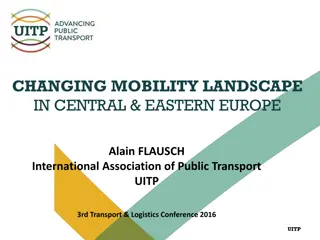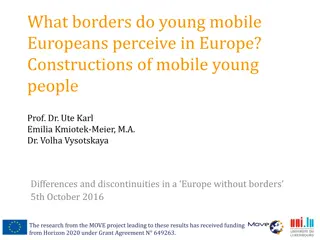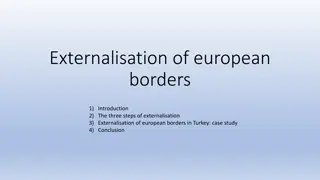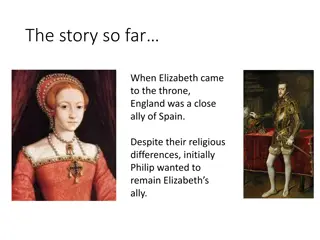Central Europe: Imagined or Real? Historical Perspective on Europe's Borders
Central Europe's historical and geographical boundaries, from the concept of Mitteleuropa to the split of the Roman Empire, the Carolingian Empire, Byzantium, and the temporary expansion of Western influences. Explore the evolution of Europe's regions and borders throughout history.
Download Presentation

Please find below an Image/Link to download the presentation.
The content on the website is provided AS IS for your information and personal use only. It may not be sold, licensed, or shared on other websites without obtaining consent from the author.If you encounter any issues during the download, it is possible that the publisher has removed the file from their server.
You are allowed to download the files provided on this website for personal or commercial use, subject to the condition that they are used lawfully. All files are the property of their respective owners.
The content on the website is provided AS IS for your information and personal use only. It may not be sold, licensed, or shared on other websites without obtaining consent from the author.
E N D
Presentation Transcript
Central Europe: imagined or real? Gy rgy Csepeli ELTE, iASK
Does Central Europe exist? Central Europe is synonymous with Mitteleuropa, a concept of Friedrich Neumann conceived during the First World War Central Europe was born in Habsburg Empire, refers to the Austro-Hungarian Monarchy Geographically the area between the Baltic and Adriatic Sea The member states of the Visegrad four
Three historical regions of Europe Split of the Roman Empire Western Part (Rome)-Occidens Eastern Part (Byzantium)-Orient (Jen Sz cs, Julianna Parti, 1983. The Three Historical Regions of Europe: An Outline. Acta Historica Academiae Scientiarum Hungariacae, vol. 29. No. 2/4. pp. 131-184
Occidens Carolingian Empire, Western model ( narrow circles of freedom) The Eastern Border around 800 AD: the line running southwards across Europe from the lower course of the Elbe-Saale, along the Leitha ( This was exactly the line that divided Europe into two camps in 1945. Is as if Stalin, Churchill and Roosevelt have studied the age of Charlemagne befor letting the Iron Curtain to fall
Orient Byzantinum s intention was to defend the heritage of Romans against the Barbarians by maintaining a defensive rigidity. Byzantinum continued Rome s centralized. bureaucratic state structure, no freedom for indidividuals and their communities The workings of medieval Europe remained incomplete in this region. The overwhelming majority of this region was to become Russia
Temporary Expansion of the West into East Between 1000 and astern Carpathians and further north reaching the Baltic regions. This expanded West included Scandinavia as well This border can be illustrated by the presence or lack of presence of Romanesque, Gothic and Renessaince buildings
Withdrawal After 1500 the eastern border of the late Carolingian Empire was to become a border again separating Western and Eastern Europe Western Europe lost its medieval extension A new region has emerged inserted between the original Western and Eastern regions of Europe This area is Central Europe
Structural differences between West and East West East From the bottom Local autonomy Personal autonomy Entrepreneurship Civic society Civic rights Urbanization Industralization Perpetual growth From the top Centralizaton Authority Bureaucratic career State Privileges State settlements Agrarian society Stop and go
Two cultures Culture of credit Trust Pride Tax Empathy Pro-capitalism Citizen Subject Rule of law Culture of levy Distrust Complain Tax evasion Envy Anti-capitalism Autorithy makes law
Central Europe Mix of the two structures Mix of the two cultures Dualisms (coexistence of feudal and capitalist segments of the society) The clash of traditionalism and modernity Alienization of modernity (Anti-Semitism) Self-orientalization of traditionalism Lack of sovereignity, legacy of imperial repression
Three clusters of Europeans (2008) Secondary analysis of the results of the European Social Survey Active, autonomous, citizens (38 %) (black) Passive, submissive, subjects (37 %) Rebels (25 %)
Future scenarios Exclusion from Western Europe (isolation) Inclusion into Western Europe (shared crisis) Bridgeing between East and West
